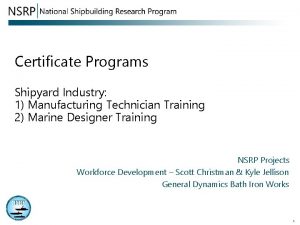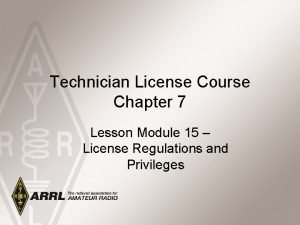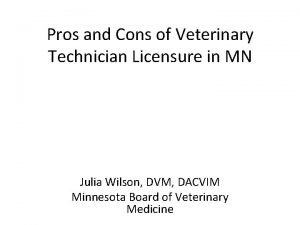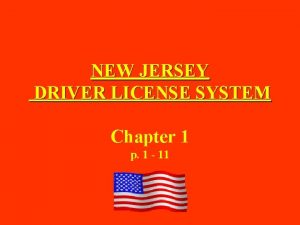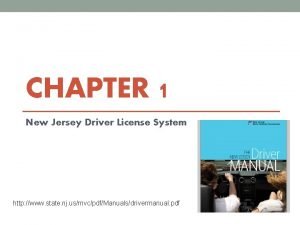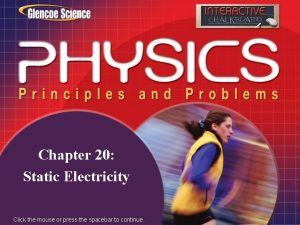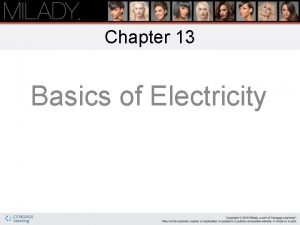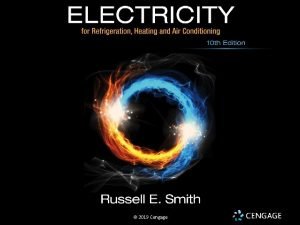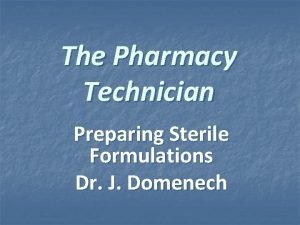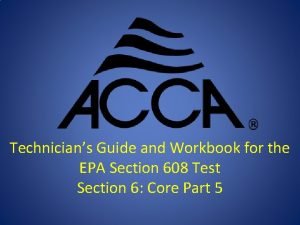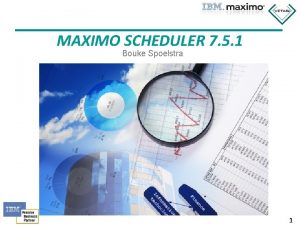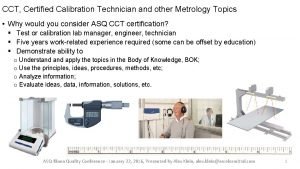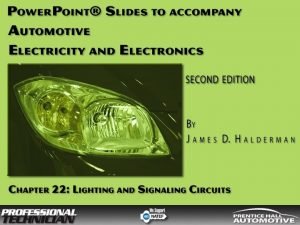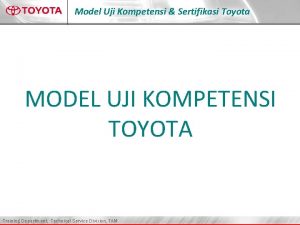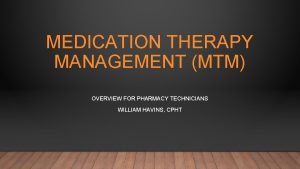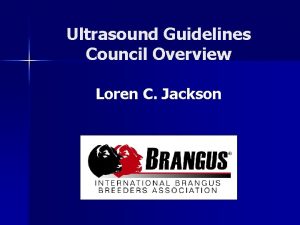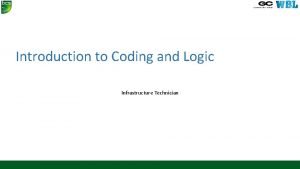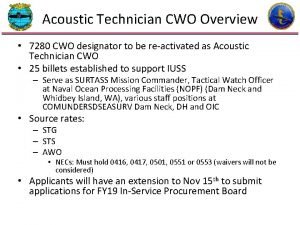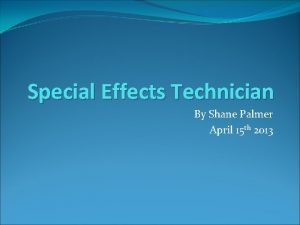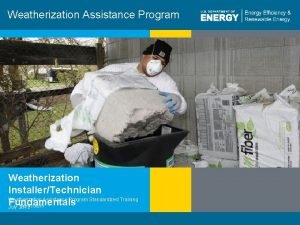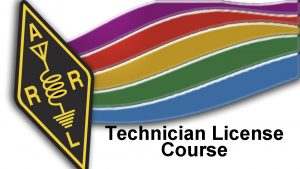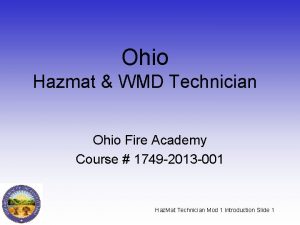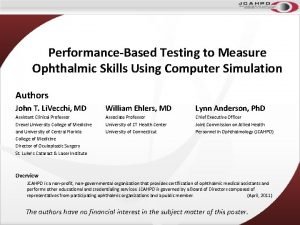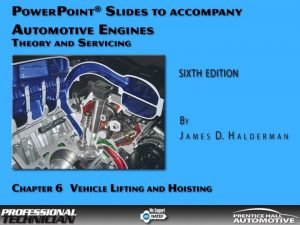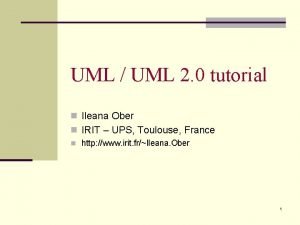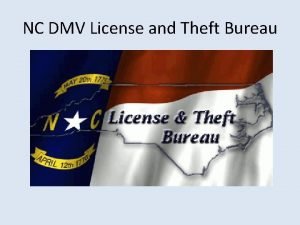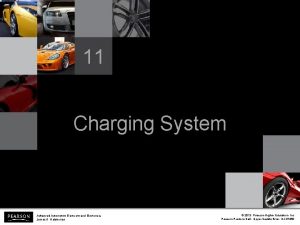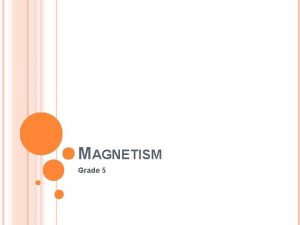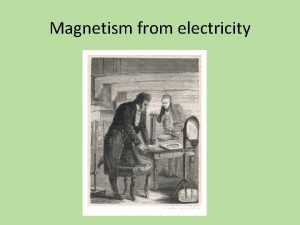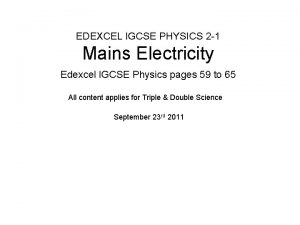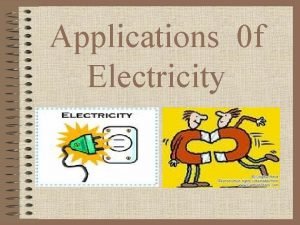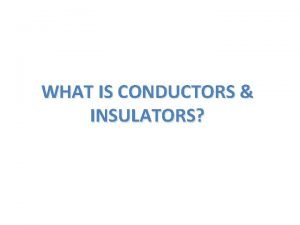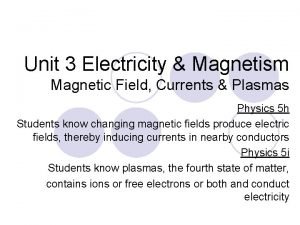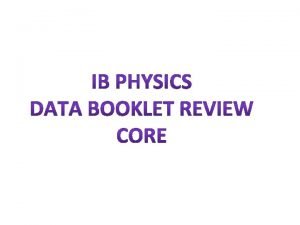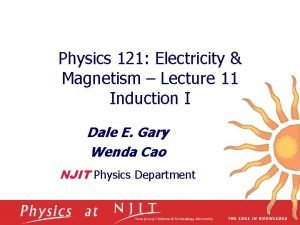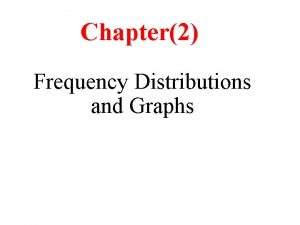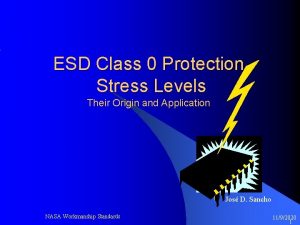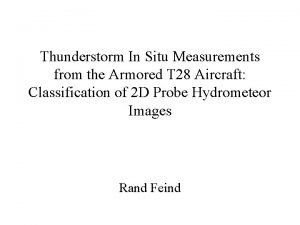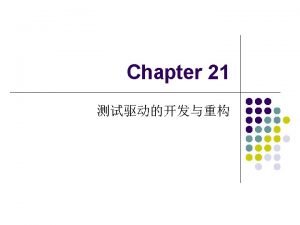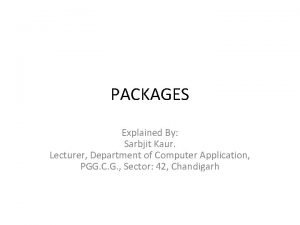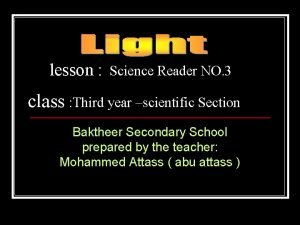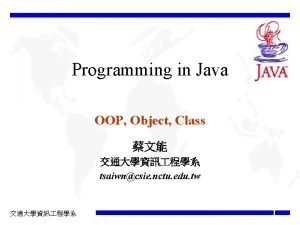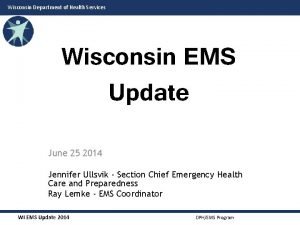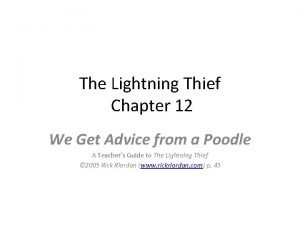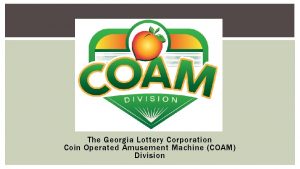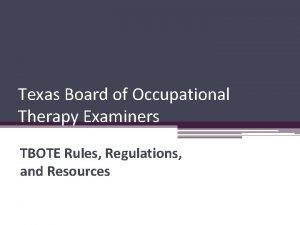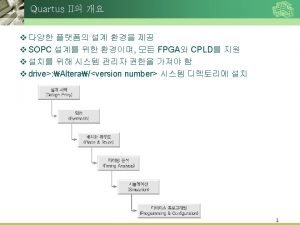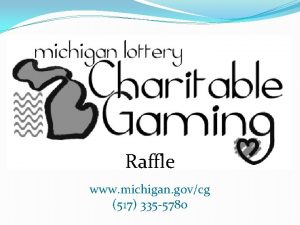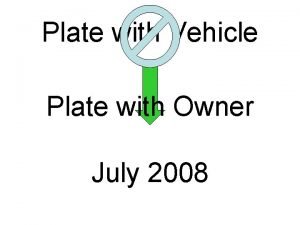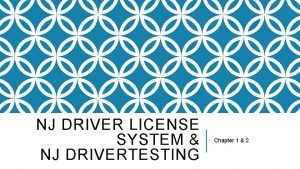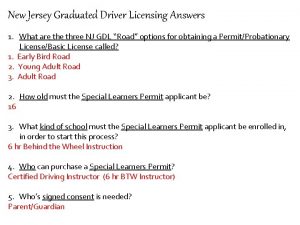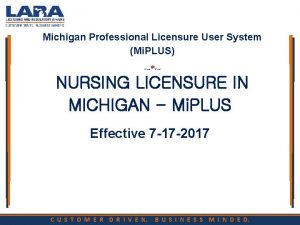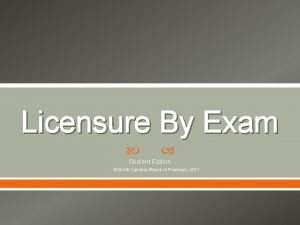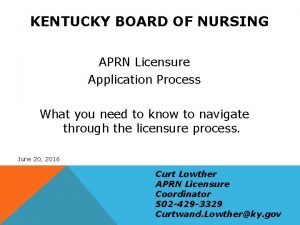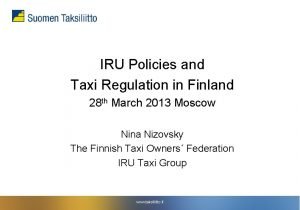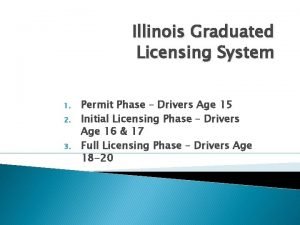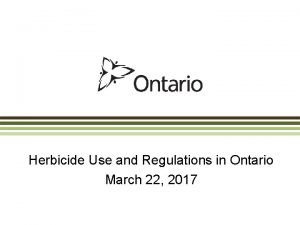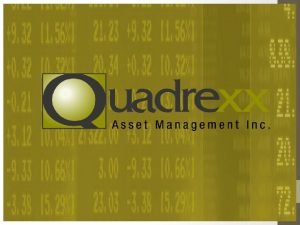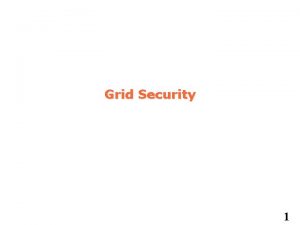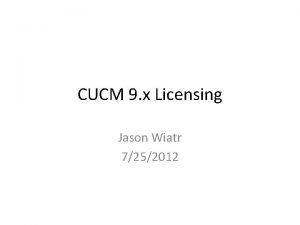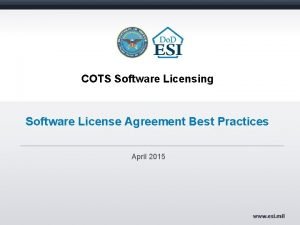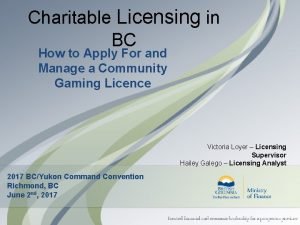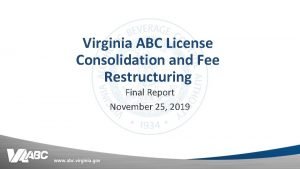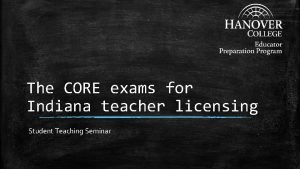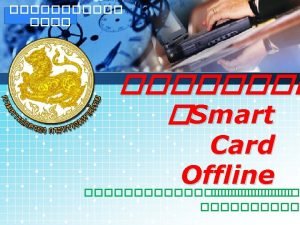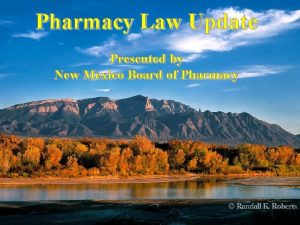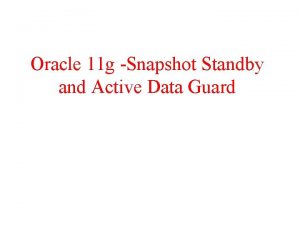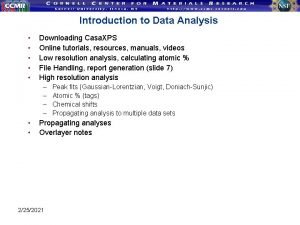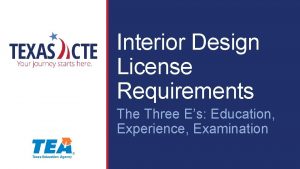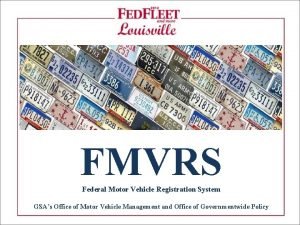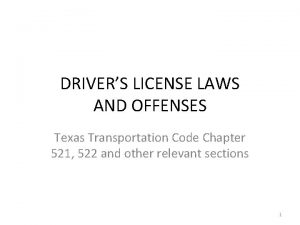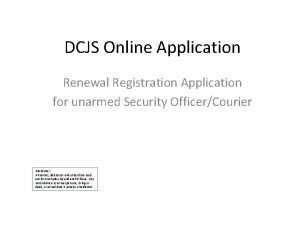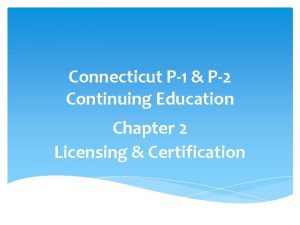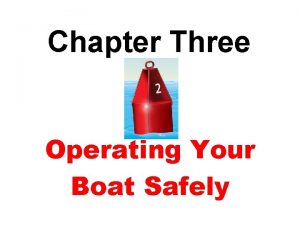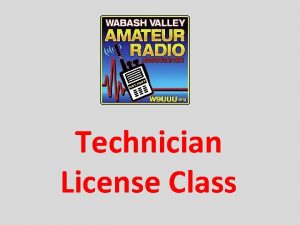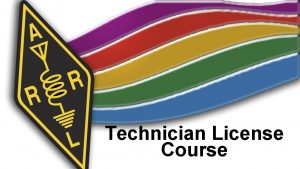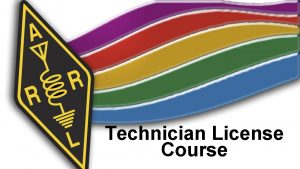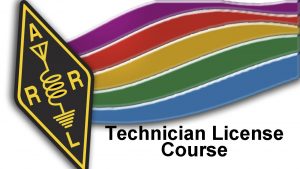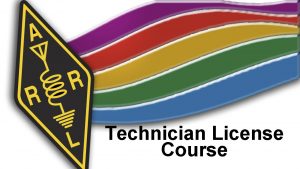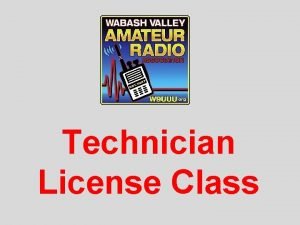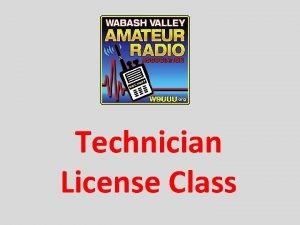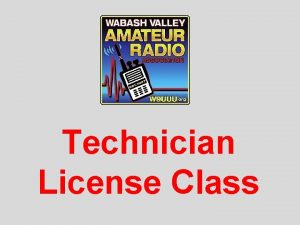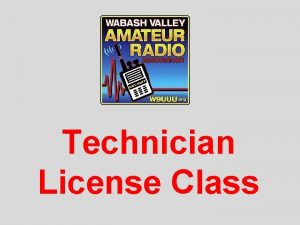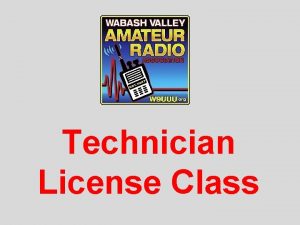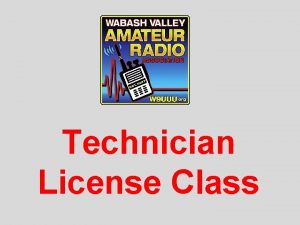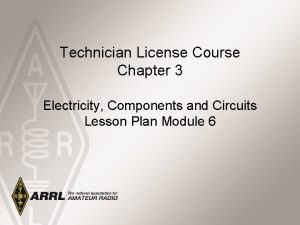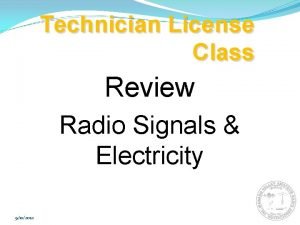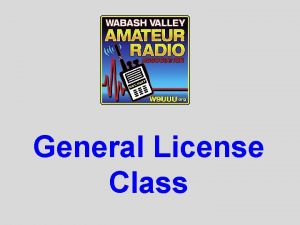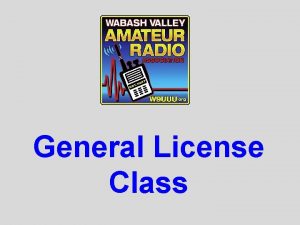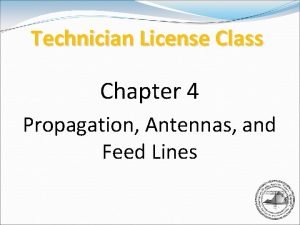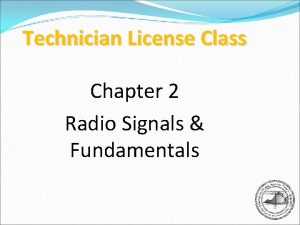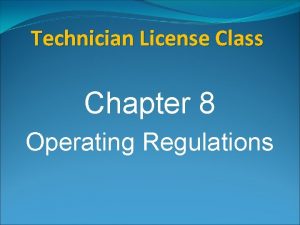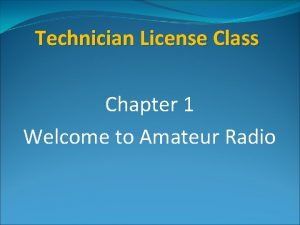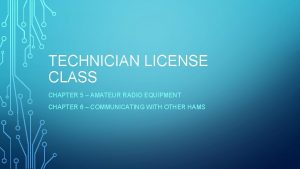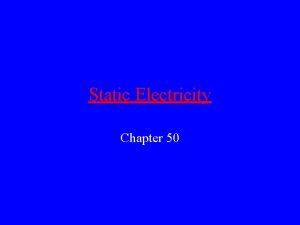Technician License Class Chapter 3 Electricity Components and































































































































































- Slides: 159

Technician License Class Chapter 3 Electricity, Components and Circuits

Electricity • When dealing with electricity, what we are referring to is the flow of electrons through a conductor. • Electrons are negatively charged atomic particles. • A conductor is a material that allows electrons to move with relative freedom within the material. • An insulator is a material that does not allow electrons to move freely within the material.

Fundamentals of Electricity • In electronics and radio, we control the flow of electrons to make things happen. • You need to have a basic understanding of how and why we control the flow of electrons so that you can better operate your radio.

Basic Characteristics of Electricity • There are three characteristics of electricity: • Voltage • Current • Resistance

Basic Characteristics of Electricity • Voltage • Electromotive force (EMF) causing electrons to flow • a. k. a. – Electric potential • Positive voltage attracts electrons • Negative voltage repels electrons • Measured in Volts (V)

Basic Characteristics of Electricity • Current • a. k. a. – Amperage • Rate (quantity, not speed) at which electrons flow • Measured in Amperes (A) • Often shortened to “Amps” • 1 Amp = 6. 25 x 1018 electrons per second • 6, 250, 000, 000

Basic Characteristics of Electricity • Resistance • Opposition to flow of electrons • Measured in Ohms (Ω)

Basic Characteristics of Electricity • The flow of water through a hose is a good analogy to understand the three characteristics of electricity and how they are related.

Characteristics of Electricity are Inter-related • Just like water flowing through a hose, changes in voltage, current and resistance affect each other. • That effect is mathematically expressed in Ohm’s Law.

Ohm’s Law • First published in 1827 by Georg Ohm in his book “Die galvanische Kette, mathematisch bearbeitet ” • Mathematically describes the relationship between voltage, current, and resistance. • Most basic formula in electricity and electronics.

Ohm’s Law • E = Electromotive Force • Force causing electrons to flow • I = Current Intensity E=Ix. R I = E/R R = E/I • Number of electrons flowing past a point in a given period of time • R = Resistance • Opposition to flow of electrons

The Electric Circuit: An Electronic Roadmap • For current to flow, there must be a path from one side of the source of the current to the other side of the source – this path is called a circuit. • There must be a hose (conductive path) through which the water (current) can flow.

Types of Circuits • Series Circuit. • Provides one and only one path for current flow.

Types of Circuits • Parallel Circuit • Provides alternative paths for current flow.

Types of Circuits • Short Circuit • Direct connection between 2 points in a circuit • Often unintentional • Open Circuit • No path from one side of the source of the current to the other side of the source • Often unintentional

Measuring Electricity • Voltage is measured with a voltmeter. • Connected in parallel with circuit. • Current is measured with an ammeter. • Connected in series with circuit.

Measuring Electricity • Resistance is measured with an ohmmeter. • Measurement is accomplished by applying a known voltage, measuring the current, & using Ohm’s Law to calculate the resistance. • Power MUST be removed from circuit before measuring! • Component should be removed from circuit, if possible.

The Multimeter • The most common test instrument is the Volt -Ohm-Milliammmeter (VOM) or Multimeter. • Measures voltage, current, or resistance. • May have other functions.

The Multimeter § Digital multimeter (DVM) § Very inexpensive. § Often has extra features in addition to measuring volts, amps, & ohms.

The Multimeter § If resistance reading is initially very low but slowly increases to a higher value, it indicates the presence of a large capacitance in the circuit. § NEVER attempt to measure resistance with power applied to the circuit. § You WILL damage your multimeter. § NEVER attempt to measure voltage with the resistance setting. § You WILL damage your multimeter.

Moving Electrons Doing Something Useful • Any time energy is expended to do something, work is performed. • When moving electrons do some work, power is consumed. • Unit of measurement of power is the Watt (W).

Power • Power is defined as the rate at which energy is used to do work. • It takes 10 x more power to expend a given amount of energy in 1 minute than it does to expend the same amount of energy in 10 minutes.

Power Formula P • P = Power Watts E I Volts Amps P=Ex. I E=P/I I=P/E • Rate at which energy is expended. • E = Voltage • I = Current

Two Basic Kinds of Current • When current flows in only one direction, it is called direct current (DC). • Batteries are a common source of DC. • Most electronic devices are powered by DC. • When current flows alternatively in one direction then in the opposite direction, it is called alternating current (AC). • Rate at which direction changes is called the frequency. • Your household current is AC.

T 5 A 01 -- Electrical current is measured in which of the following units? A. B. C. D. Volts Watts Ohms Amperes

T 5 A 03 -- What is the name for the flow of electrons in an electric circuit? A. B. C. D. Voltage Resistance Capacitance Current

T 5 A 04 -- What is the name for a current that flows only in one direction? A. Alternating current B. Direct current C. Normal current D. Smooth current

T 5 A 05 -- What is the electrical term for the electromotive force (EMF) that causes electron flow? A. B. C. D. Voltage Ampere-hours Capacitance Inductance

T 5 A 09 -- What is the name for a current that reverses direction on a regular basis? A. Alternating current B. Direct current C. Circular current D. Vertical current

T 5 A 11 -- What is the basic unit of electromotive force? A. B. C. D. The volt The watt The ampere The ohm

T 7 D 01 -- Which instrument would you use to measure electric potential or electromotive force? A. B. C. D. An ammeter A voltmeter A wavemeter An ohmmeter

T 7 D 04 -- Which instrument is used to measure electric current? A. B. C. D. An ohmmeter A wavemeter A voltmeter An ammeter

T 5 A 13 -- In which type of circuit is current the same through all components? A. Series B. Parallel C. Resonant D. Branch new

T 5 A 14 -- In which type of circuit is voltage the same across all components? A. Series B. Parallel C. Resonant D. Branch new

T 5 D 13 -- What happens to current at the junction of two components in series? A. It divides equally between them B. It is unchanged C. It divides based on the value of the components D. The current in the second component is zero new

T 5 D 14 -- What happens to current at the junction of two components in parallel? A. It divides between them dependent on the value of the components B. It is the same in both components C. Its value doubles D. Its value is halved new

T 5 D 15 -- What is the voltage across each of two components in series with a voltage source? A. The same voltage as the source B. Half the source voltage C. It is determined by the type and value of the components D. Twice the source voltage new

T 5 D 16 -- What is the voltage across each of two components in parallel with a voltage source? A. It is determined by the type and value of the components B. Half the source voltage C. Twice the source voltage D. The same voltage as the source new

T 7 D 02 -- What is the correct way to connect a voltmeter to a circuit? A. B. C. D. In series with the circuit In parallel with the circuit In quadrature with the circuit In phase with the circuit

T 7 D 03 -- How is a simple ammeter usually connected to a circuit? A. B. C. D. In series with the circuit In parallel with the circuit In quadrature with the circuit In phase with the circuit

T 7 D 06 -- Which of the following might damage a multimeter? A. Measuring a voltage too small for the chosen scale B. Leaving the meter in the milliamps position overnight C. Attempting to measure voltage when using the resistance setting D. Not allowing it to warm up properly

T 7 D 07 -- Which of the following measurements are commonly made using a multimeter? A. B. C. D. SWR and RF power Signal strength and noise Impedance and reactance Voltage and resistance

T 7 D 10 -- What is probably happening when an ohmmeter, connected across an unpowered circuit, initially indicates a low resistance and then shows increasing resistance with time? A. B. C. D. The ohmmeter is defective The circuit contains a large capacitor The circuit contains a large inductor The circuit is a relaxation oscillator

T 7 D 11 -- Which of the following precautions should be taken when measuring circuit resistance with an ohmmeter? A. B. C. D. Ensure that the applied voltages are correct Ensure that the circuit is not powered Ensure that the circuit is grounded Ensure that the circuit is operating at the correct frequency

T 7 D 12 -- Which of the following precautions should be taken when measuring high voltages with a voltmeter? A. Ensure that the voltmeter has very low impedance B. Ensure that the voltmeter and leads are rated for use at the voltages to be measured C. Ensure that the circuit is grounded through the voltmeter D. Ensure that the voltmeter is set to the correct frequency

T 5 A 07 -- Which of the following is a good electrical conductor? A. B. C. D. Glass Wood Copper Rubber

T 5 A 08 -- Which of the following is a good electrical insulator? A. B. C. D. Copper Glass Aluminum Mercury

T 7 D 05 -- What instrument is used to measure resistance? A. B. C. D. An oscilloscope A spectrum analyzer A noise bridge An ohmmeter

T 5 D 01 -- What formula is used to calculate current in a circuit? A. Current (I) equals voltage (E) multiplied by resistance (R) B. Current (I) equals voltage (E) divided by resistance (R) C. Current (I) equals voltage (E) added to resistance (R) D. Current (I) equals voltage (E) minus resistance (R)

T 5 D 02 -- What formula is used to calculate voltage in a circuit? A. Voltage (E) equals current (I) multiplied by resistance (R) B. Voltage (E) equals current (I) divided by resistance (R) C. Voltage (E) equals current (I) added to resistance (R) D. Voltage (E) equals current (I) minus resistance (R)

T 5 D 03 -- What formula is used to calculate resistance in a circuit? A. Resistance (R) equals voltage (E) multiplied by current (I) B. Resistance (R) equals voltage (E) divided by current (I) C. Resistance (R) equals voltage (E) added to current (I) D. Resistance (R) equals voltage (E) minus current (I)

T 5 D 04 -- What is the resistance of a circuit in which a current of 3 amperes flows through a resistor connected to 90 volts? A. 3 ohms B. 30 ohms C. 93 ohms D. 270 ohms New

T 5 D 05 -- What is the resistance in a circuit for which the applied voltage is 12 volts and the current flow is 1. 5 amperes? A. 18 ohms B. 0. 125 ohms C. 8 ohms D. 13. 5 ohms New

T 5 D 06 -- What is the resistance of a circuit that draws 4 amperes from a 12 -volt source? A. 3 ohms B. 16 ohms C. 48 ohms D. 8 Ohms New

T 5 D 07 -- What is the current in a circuit with an applied voltage of 120 volts and a resistance of 80 ohms? A. 9600 amperes B. 200 amperes C. 0. 667 amperes D. 1. 5 amperes New

T 5 D 08 -- What is the current through a 100 -ohm resistor connected across 200 volts? A. 20, 000 amperes B. 0. 5 amperes C. 2 amperes D. 100 amperes New

T 5 D 09 -- What is the current through a 24 -ohm resistor connected across 240 volts? A. 24, 000 amperes B. 0. 1 amperes C. 10 amperes D. 216 amperes New

T 5 D 10 -- What is the voltage across a 2 -ohm resistor if a current of 0. 5 amperes flows through it? A. 1 volt B. 0. 25 volts C. 2. 5 volts D. 1. 5 volts New

T 5 D 11 -- What is the voltage across a 10 -ohm resistor if a current of 1 ampere flows through it? A. 1 volt B. 10 volts C. 11 volts D. 9 volts New

T 5 D 12 -- What is the voltage across a 10 -ohm resistor if a current of 2 amperes flows through it? A. 8 volts B. 0. 2 volts C. 12 volts D. 20 volts New

T 5 A 02 -- Electrical power is measured in which of the following units? A. Volts B. Watts C. Ohms D. Amperes

T 5 A 10 -- Which term describes the rate at which electrical energy is used? A. B. C. D. Resistance Current Power Voltage

T 5 C 08 -- What is the formula used to calculate electrical power in a DC circuit? A. Power (P) equals voltage (E) multiplied by current (I) B. Power (P) equals voltage (E) divided by current (I) C. Power (P) equals voltage (E) minus current (I) D. Power (P) equals voltage (E) plus current (I)

T 5 C 09 -- How much power is being used in a circuit when the applied voltage is 13. 8 volts DC and the current is 10 amperes? A. B. C. D. 138 watts 0. 7 watts 23. 8 watts

T 5 C 10 -- How much power is being used in a circuit when the applied voltage is 12 volts DC and the current is 2. 5 amperes? A. B. C. D. 4. 8 watts 30 watts 14. 5 watts 0. 208 watts

T 5 C 11 -- How many amperes are flowing in a circuit when the applied voltage is 12 volts DC and the load is 120 watts? A. B. C. D. 0. 1 amperes 10 amperes 12 amperes 132 amperes

Break

Components and Units § There are 3 basic types of components: § Resistor § § Capacitor § § Unit of measurement of resistance is the ohm (Ω). Unit of measurement of capacitance is the farad (F). Inductor § Unit of measurement of inductance is the henry (H).

The Resistor • The function of the resistor is to reduce (limit) the flow of current through it. • Potentiometer. • Volume Control

The Resistor • A fixed amount of partially conductive material. • Ratings • Resistance • Ohms (Ω), kilohms (kΩ), megohms (MΩ) • Values from <1 Ω to >10 MΩ. • Maximum power in watts (W). • Values from a fraction of a watt to a couple to >100 W.

Capacitance • Capacitance is the ability to store energy in an electric field. • The unit of measurement of capacitance is the Farad (F). • 1 F is a very large value. • Capacitors are commonly available in values ranging from 1 p. F to a few hundred thousand microfarads.

The Capacitor • The function of the capacitor is to temporarily store electrical energy in an electric field. • Like a very temporary storage battery.

The Capacitor • • Two conductive surfaces separated by an insulator. Ratings • • • Capacitance in picofarads (p. F), microfarads (μF), or farads (F) Values from 1 p. F to 1 F. Maximum voltage in volts (V), or kilovolts (k. V) • Values from a few volts to several kilovolts.

Inductance • Inductance is the ability to store energy in a magnetic field. • The unit of measurement of inductance is the Henry (H). • Inductors are commonly available in values ranging from 1µH to a few Henries.

The Inductor • The function of the inductor is to temporarily store electrical energy in a magnetic field. • Basically a coil of wire.

The Transformer • One function of the transformer is to change AC voltage levels.

Components • Color Code. • Component values often marked on component by colored stripes or dots. • • Very common with resistors Less common with capacitors and inductors. • Axial-lead cases.

Components

Components and Units • Color Code. • Bad Beer Rots Out Your Guts But Veggies Go Well. • Get Some Now (tolerance)

Reactance & Impedance • In circuits containing only resistors, voltage & current are always “in phase”. • Current flow changes at the same time and in the same direction as the voltage change. • Special kind of resistance to the flow of AC called reactance (X). • Reactance also measured in Ohms (Ω).

Reactance & Impedance • In circuits containing capacitors or inductors, voltage & current are “out of phase”. • Current flow changes before the voltage changes in a capacitor. • Current “leads” voltage. • Current flow changes after the voltage changes in an inductor. • Current “lags” voltage. ELI the ICEman

Reactance & Impedance • Opposition to AC current flow in capacitors or inductors is called reactance (X, XC, or XL). • Reactance is also measured in Ohms (Ω).

Reactance & Impedance • Combination of resistance and reactance is called impedance (Z). • Impedance also measured in Ohms (Ω).

Resonance • Because current leads voltage in a capacitor & lags voltage in an inductor, a combination exists where the lead time & lag time cancel, resulting in the current & voltage being in phase.

Resonance • This condition is called resonance. • Resonant circuit. • Tuned circuit. • Impedance of a resonant circuit is purely resistive. • Reactance = 0Ω

Protective Components – Intentional Open Circuits • Fuses and circuit breakers are designed to interrupt the flow of current if the current becomes to large • Fuses blow – one time protection • Circuit breakers trip – can be reset and reused

The Switch • The function of the switch is to turn on or off or to redirect the flow of current.

The Relay • A relay is an electrically-controlled switch. • A set of switch contacts connected to an electromagnet.

The Meter • A meter displays an electrical value on a numeric scale. • All analog meters are ammeters. • A voltmeter is an ammeter with a series resistor.

The Diode • The function of the diode is to allow the flow of current in only one direction. • An analogy, a check valve in a water system.

The Diode • One use of a diode is as a rectifier in a power supply circuit to convert an AC voltage into a varying DC voltage.

The Diode • Light-Emitting Diode (LED). • Emits light when forward-biased.

The Transistor • The function of the transistor is to variably control the flow of current. • Much like an electronically controlled valve. • An analogy, the faucet in your sink. NPN PNP

The Transistor • Bipolar Transistors. • Small change in base current results in large change in emitter current. • Low input & output impedances.

The Transistor • Field-Effect Transistors (FET). • Small change in gate voltage results in large change in drain current. • High input impedance & low output impedance.

The Integrated Circuit • The integrated circuit is a collection of components contained in one device that accomplishes a specific task. • Acts like a “black-box”

Other Circuit Symbols

Putting It All Together in a Circuit Diagram

T 5 C 01 -- What is the ability to store energy in an electric field called? A. B. C. D. Inductance Resistance Tolerance Capacitance

T 5 C 02 -- What is the basic unit of capacitance? A. B. C. D. The farad The ohm The volt The henry

T 5 C 03 -- What is the ability to store energy in a magnetic field called? A. B. C. D. Admittance Capacitance Resistance Inductance

T 5 C 04 -- What is the basic unit of inductance? A. B. C. D. The coulomb The farad The henry The ohm

T 6 A 01 -- What electrical component is used to oppose the flow of current in a DC circuit? A. B. C. D. Inductor Resistor Voltmeter Transformer

T 6 A 02 -- What type of component is often used as an adjustable volume control? A. B. C. D. Fixed resistor Power resistor Potentiometer Transformer

T 6 A 03 -- What electrical parameter is controlled by a potentiometer? A. B. C. D. Inductance Resistance Capacitance Field strength

T 6 A 04 -- What electrical component stores energy in an electric field? A. B. C. D. Resistor Capacitor Inductor Diode

T 6 A 05 -- What type of electrical component consists of two or more conductive surfaces separated by an insulator? A. B. C. D. Resistor Potentiometer Oscillator Capacitor

T 6 A 06 -- What type of electrical component stores energy in a magnetic field? A. B. C. D. Resistor Capacitor Inductor Diode

T 6 A 07 -- What electrical component is usually composed of a coil of wire? A. B. C. D. Switch Capacitor Diode Inductor

T 6 D 06 -- What component is commonly used to change 120 V AC house current to a lower AC voltage for other uses? A. B. C. D. Variable capacitor Transformer Transistor Diode

T 5 C 12 -- What is meant by the term impedance? A. It is a measure of the opposition to AC current flow in a circuit B. It is the inverse of resistance C. It is a measure of the Q or Quality Factor of a component D. It is a measure of the power handling capability of a component

T 5 C 13 -- What are the units of impedance? A. Volts B. Amperes C. Coulombs D. Ohms

T 6 D 08 -- Which of the following is combined with an inductor to make a tuned circuit? A. Resistor B. Zener diode C. Potentiometer D. Capacitor

T 6 D 11 – Which of the following is a resonant or a tuned circuit? A. An inductor and a capacitor connected in series or parallel to form a filter B. A type of voltage regulator C. A resistor circuit used for reducing standing wave ratio D. A circuit designed to provide high-fidelity audio

T 6 B 01 -- What class of electronic components uses a voltage or current signal to control current flow? A. B. C. D. Capacitors Inductors Resistors Transistors

T 6 B 02 -- What electronic component allows current to flow in only one direction? A. B. C. D. Resistor Fuse Diode Driven element

T 6 B 03 -- Which of these components can be used as an electronic switch or amplifier? A. B. C. D. Oscillator Potentiometer Transistor Voltmeter

T 6 B 04 -- Which of the following components can consist of three layers of semiconductor material? A. B. C. D. Alternator Transistor Triode Pentagrid converter

T 6 B 05 -- Which of the following electronic components can amplify signals? A. B. C. D. Transistor Variable resistor Electrolytic capacitor Multi-cell battery

T 6 B 06 -- How is the cathode lead of a semiconductor diode often marked on the package? A. B. C. D. With the word “cathode” With a stripe With the letter C With the letter K

T 6 B 07 -- What does the abbreviation LED stand for? A. B. C. D. Low Emission Diode Light Emitting Diode Liquid Emission Detector Long Echo Delay

T 6 B 08 -- What does the abbreviation FET stand for? A. B. C. D. Field Effect Transistor Fast Electron Transistor Free Electron Transition Field Emission Thickness

T 6 B 09 -- What are the names of the two electrodes of a diode? A. B. C. D. Plus and minus Source and drain Anode and cathode Gate and base

T 6 B 10 -- Which of the following could be the primary gain-producing component in an RF power amplifier? changed A. Transformer B. Transistor C. Reactor D. Resistor

T 6 B 11 -- What is the term that describes a device's ability to amplify a signal? changed A. Gain B. Forward resistance C. Forward voltage drop D. On resistance

T 6 D 01 -- Which of the following devices or circuits changes an alternating current into a varying direct current signal? A. B. C. D. Transformer Rectifier Amplifier Reflector

T 6 D 07 -- Which of the following is commonly used as a visual indicator? A. B. C. D. LED FET Zener diode Bipolar transistor

T 6 D 09 -- What is the name of a device that combines several semiconductors and other components into one package? A. B. C. D. Transducer Multi-pole relay Integrated circuit Transformer

T 6 D 10 -- What is the function of component 2 in Figure T 1? A. Give off light when current flows through it B. Supply electrical energy C. Control the flow of current D. Convert electrical energy into radio waves

T 6 A 09 -- What electrical component is used to protect other circuit components from current overloads? A. B. C. D. Fuse Capacitor Inductor All of these choices are correct

T 0 A 04 -- What is the purpose of a fuse in an electrical circuit? A. To prevent power supply ripple from damaging a circuit B. To interrupt power in case of overload C. To limit current to prevent shocks D. All of these choices are correct

T 0 A 05 -- Why is it unwise to install a 20 -ampere fuse in the place of a 5 -ampere fuse? A. The larger fuse would be likely to blow because it is rated for higher current B. The power supply ripple would greatly increase C. Excessive current could cause a fire D. All of these choices are correct

T 6 A 08 -- What electrical component is used to connect or disconnect electrical circuits? A. Magnetron B. Switch C. Thermistor D. All of these choices are correct

T 6 D 02 – What is a relay? A. An electrically-controlled switch B. A current controlled amplifier C. An optical sensor D. A pass transistor

T 6 D 03 -- What type of switch is represented by component 3 in figure T 2? new A. Single-pole single-throw B. Single-pole double-throw C. Double-pole single-throw D. Double-pole double-throw New…see figures 3. 15 and 3. 16,

T 6 D 04 -- Which of the following displays an electrical quantity as a numeric value? A. B. C. D. Potentiometer Transistor Meter Relay

T 6 C 01 -- What is the name an electrical wiring diagram that uses standard component symbols? A. B. C. D. Bill of materials Connector pinout Schematic Flow chart

T 6 C 02 --What is component 1 in figure T 1? A. Resistor B. Transistor C. Battery D. Connector New…see figures 3. 15 and 3. 16,

T 6 C 03 --What is component 2 in figure T 1? A. Resistor B. Transistor C. Indicator lamp D. Connector New…see figures 3. 15 and 3. 16,

T 6 C 04 --What is component 3 in figure T 1? A. Resistor B. Transistor C. Lamp D. Ground symbol New…see figures 3. 15 and 3. 16,

T 6 C 05 --What is component 4 in figure T 1? A. Resistor B. Transistor C. Battery D. Ground symbol New…see figures 3. 15 and 3. 16,

T 6 C 06 --What is component 6 in figure T 2? A. Resistor B. Capacitor C. Regulator IC D. Transistor New…see figures 3. 15 and 3. 16,

T 6 C 07 --What is component 8 in figure T 2? A. Resistor B. Inductor C. Regulator IC D. Light emitting diode New…see figures 3. 15 and 3. 16,

T 6 C 08 --What is component 9 in figure T 2? A. Variable capacitor B. Variable inductor C. Variable resistor D. Variable transformer New…see figures 3. 15 and 3. 16,

T 6 C 09 --What is component 4 in figure T 2? A. Variable inductor B. Double-pole switch C. Potentiometer D. Transformer New…see figures 3. 15 and 3. 16,

T 6 C 10 --What is component 3 in figure T 3? A. Connector B. Meter C. Variable capacitor D. Variable inductor New…see figures 3. 15 and 3. 16,

T 6 C 11 --What is component 4 in figure T 3? A. Antenna B. Transmitter C. Dummy load D. Ground New…see figures 3. 15 and 3. 16,

T 6 C 12 -- What do the symbols on an electrical schematic represent? A. Electrical components B. Logic states C. Digital codes D. Traffic nodes New

T 6 C 13 -- Which of the following is accurately represented in electrical schematics? A. Wire lengths B. Physical appearance of components C. The way components are interconnected D. All of these choices are correct New

Radio Circuits • Oscillators • An oscillator produces a steady AC voltage on a single frequency. • Used in both receivers & transmitters to determine operating frequency. • Variable-frequency oscillator (VFO).

Radio Circuits • Amplifiers • An amplifier increases the strength of a signal. • Increase voltage, current, or power. • Amount of increase is called “gain”. • Numeric value – For example, a gain of 10 means the output signal is 10 times bigger than input signal. • d. B – For example, a power gain of 3 d. B means the output signal has twice the power than the input signal.

Simple CW Transmitter Block Diagram

Circuits Used in Radios • Modulators • Encode information (voice, data, etc. ) onto an RF signal (carrier) • Can be as simple as on-off switch • Telegraph key • Can be very complex

Circuits Used in Radios • Demodulators • Extracts information (voice, data, etc. ) from RF signal (carrier) • Several different types of demodulators used in amateur radio equipment depending on type of modulation being used

Circuits Used in Radios • Mixers. • Mixes 2 different frequency signals together to produce 4 output frequencies. • f 1 x f 2 f 1, f 2, f 1 -f 2, & f 1+f 2. • Usually one output frequency wanted, so filters remove other 3 frequencies. • Used in both transmitters & receivers.

T 7 A 05 -- What is the name of a circuit that generates a signal at a specific frequency? A. B. C. D. Reactance modulator Product detector Low-pass filter Oscillator

T 7 A 08 -- Which of the following describes combining speech with an RF carrier signal? A. B. C. D. Impedance matching Oscillation Modulation Low-pass filtering

T 7 A 03 -- Which of the following is used to convert a radio signal from one frequency to another? A. Phase splitter B. Mixer C. Inverter D. Amplifier

Questions?
 Manufacturing technician license
Manufacturing technician license Manufacturing technician license
Manufacturing technician license Static electricity and current electricity
Static electricity and current electricity Static electricity and current electricity
Static electricity and current electricity Electricity and magnetism vocabulary
Electricity and magnetism vocabulary Technician class privileges
Technician class privileges Driver license class
Driver license class Class c license
Class c license Vet tech pros and cons
Vet tech pros and cons Radar and sonar technician career cluster
Radar and sonar technician career cluster Altering a driver's license
Altering a driver's license Chapter 1 nj driver license system
Chapter 1 nj driver license system Chapter 1 the new jersey driver license system answers
Chapter 1 the new jersey driver license system answers Chapter 6 electricity section 1 electric charge answers
Chapter 6 electricity section 1 electric charge answers Static electricity chapter 20 answers
Static electricity chapter 20 answers Chapter 13 basics of electricity
Chapter 13 basics of electricity Chapter 12 basic electricity
Chapter 12 basic electricity The oldest method of moving electrons is by
The oldest method of moving electrons is by What is coring in pharmacy
What is coring in pharmacy How long must a technician evacuating refrigerant
How long must a technician evacuating refrigerant Maximo job scheduling
Maximo job scheduling Asq certified calibration technician
Asq certified calibration technician Career cluster define
Career cluster define Technician a says that the bulb trade number
Technician a says that the bulb trade number Toyota technician certification
Toyota technician certification Micromain mobile
Micromain mobile Mtm pharmacy technician
Mtm pharmacy technician Maximo scheduling software
Maximo scheduling software Rbt session note example
Rbt session note example Surface repair technician
Surface repair technician She technician apprenticeship
She technician apprenticeship Vetenarian technician
Vetenarian technician Live technician
Live technician Ultrasound guidelines council
Ultrasound guidelines council Bcs infrastructure technician
Bcs infrastructure technician A csi lab technician _____.
A csi lab technician _____. Horticultural technician apprentice
Horticultural technician apprentice Acoustic warrant officer
Acoustic warrant officer How to become a special effects technician
How to become a special effects technician How to become a weatherization technician
How to become a weatherization technician Level 9 technician
Level 9 technician Tracemp
Tracemp Pci wind turbine technician
Pci wind turbine technician Cec ilac
Cec ilac Ophthalmic technician skills checklist
Ophthalmic technician skills checklist Commonly damaged areas of a vehicle during hoisting
Commonly damaged areas of a vehicle during hoisting Ecc x ray technician
Ecc x ray technician Dtabc
Dtabc Uml
Uml Abstract class vs concrete class
Abstract class vs concrete class Abstract concrete class relationship
Abstract concrete class relationship Therapeutic class and pharmacologic class
Therapeutic class and pharmacologic class Static vs dynamic class loading
Static vs dynamic class loading Nc license and theft bureau phone number
Nc license and theft bureau phone number Lawn and ornamental license florida
Lawn and ornamental license florida Article 20-c food processing license
Article 20-c food processing license 4 forces of nature
4 forces of nature Ib physics topic 5 questions and answers
Ib physics topic 5 questions and answers Pros of fossil fuels
Pros of fossil fuels Electricity and magnetism lecture notes
Electricity and magnetism lecture notes Phys 241 purdue
Phys 241 purdue Magnetism jeopardy
Magnetism jeopardy Electrons flowing
Electrons flowing Advanced automotive electronics
Advanced automotive electronics Sph3u electricity and magnetism
Sph3u electricity and magnetism Relationship between electricity and magnetism
Relationship between electricity and magnetism Intensity of magnetisation
Intensity of magnetisation Grade 5 electricity and magnetism
Grade 5 electricity and magnetism Electricity and magnetism
Electricity and magnetism Electricity and magnetism
Electricity and magnetism Igcse physics electricity questions and answers
Igcse physics electricity questions and answers Ampere
Ampere Insulator and conductor
Insulator and conductor Water and electricity in accounting
Water and electricity in accounting Voltage and electricity
Voltage and electricity Public authority for electricity and water
Public authority for electricity and water Venn diagram of active and passive voice
Venn diagram of active and passive voice Electricity and magnetism
Electricity and magnetism Electricity and magnetism
Electricity and magnetism How was today's class
How was today's class Package mypackage; class first { /* class body */ }
Package mypackage; class first { /* class body */ } Lower class boundary of modal class
Lower class boundary of modal class Class i vs class ii mhc
Class i vs class ii mhc Lower class boundary
Lower class boundary Stimuli vs stimulus
Stimuli vs stimulus Discrimination training
Discrimination training Class maths student student1 class student string name
Class maths student student1 class student string name How to find class boundaries
How to find class boundaries In greenfoot, you can cast an actor class to a world class?
In greenfoot, you can cast an actor class to a world class? Class 0 esd
Class 0 esd Static uml diagrams
Static uml diagrams Class 2 class 3
Class 2 class 3 Extends testcase
Extends testcase Package mypackage class first class body
Package mypackage class first class body Class third class
Class third class Uml class diagram inner class
Uml class diagram inner class Component class has composite class as collaborator
Component class has composite class as collaborator Work based learning license mn
Work based learning license mn Wisconsin ems licensing
Wisconsin ems licensing License smart register idtoken invalid input
License smart register idtoken invalid input Percy jackson and the lightning thief chapter 12 summary
Percy jackson and the lightning thief chapter 12 summary Georgia coam reporting
Georgia coam reporting Tbote
Tbote Spla reporting
Spla reporting Quartus ii web edition download
Quartus ii web edition download State of michigan raffle license
State of michigan raffle license Seller's permit south dakota
Seller's permit south dakota Oregon lpn scope of practice
Oregon lpn scope of practice Omma complaint form
Omma complaint form Safety pledge to nikhil
Safety pledge to nikhil Graduated drivers license nj
Graduated drivers license nj Sap licensing negotiation
Sap licensing negotiation Mwbc letter lara
Mwbc letter lara Ncbop renewal
Ncbop renewal Ptal california medical board
Ptal california medical board Kofax vrs basic
Kofax vrs basic Kentucky board of nursing renewal
Kentucky board of nursing renewal Taxi license finland
Taxi license finland Sas license cost
Sas license cost Graduated license illinois
Graduated license illinois Hid bluetooth credentials
Hid bluetooth credentials Herbicide license ontario
Herbicide license ontario Quibik
Quibik Rok vs oem
Rok vs oem John doe drivers license
John doe drivers license Dcas license how to apply
Dcas license how to apply Dmc licence
Dmc licence Cucm enhanced license
Cucm enhanced license Software licensing best practices
Software licensing best practices Gaming licence bc
Gaming licence bc Specialty cottage indoor
Specialty cottage indoor Kentucky nursing laws
Kentucky nursing laws Hsmv 82137
Hsmv 82137 Virginia abc license renewal
Virginia abc license renewal Indiana teacher certification exams
Indiana teacher certification exams Scapi status pin currently blocked
Scapi status pin currently blocked Odc license consultants
Odc license consultants Qlikview usage cal
Qlikview usage cal Microsoft service provider license agreement
Microsoft service provider license agreement License
License Nm pmp aware
Nm pmp aware Difference between data guard and active data guard
Difference between data guard and active data guard Campus-wide license
Campus-wide license Newport beach business license
Newport beach business license New mexico interlock laws
New mexico interlock laws Railway board letter on land management
Railway board letter on land management Show license udi
Show license udi Casaxps
Casaxps Interior decorating license
Interior decorating license National ayush mission karnataka
National ayush mission karnataka Forestry licence viewer
Forestry licence viewer Fmvrs license plate
Fmvrs license plate Microsoft effective license position
Microsoft effective license position Section 521.222 (d)(2) transportation code
Section 521.222 (d)(2) transportation code Dfs inc flex plan
Dfs inc flex plan Dcjs unarmed security license
Dcjs unarmed security license P2 plumbing license
P2 plumbing license Key west transient license
Key west transient license Boat license missouri
Boat license missouri Capa ns kentucky
Capa ns kentucky
